Mr NATHAN HAGARTY (Leppington) (12:52): I speak on the Health Legislation Amendment (Splitting of the Murrumbidgee Local Health District) Bill 2025. While I appreciate the concerns raised by the good member for Murray, I believe that the bill risks unintentionally doing more harm than good for the people who rely on our health system. That is especially concerning when it comes to regional and rural communities. Splitting the local health district would disrupt an integrated and collaborative network. While the State has many health functions, the Feds play a role. No doubt other services outside the government system, as well as local government, also have some touchpoints in providing the people of that district with health services.
Every hospital in the district plays a role in sharing clinical resources, supporting smaller sites and maintaining coordinated referral pathways. Essentially, splitting the district would mean disrupting effective networks that have been built up for years and that provide health services to the people who need them. Breaking the system in two would also mean duplicating corporate functions—more CEOs, more board members, more chairs, more consultants, more marketing, more managers and all that kind of stuff. While I do not suggest in any way that it would lead to corruption, I note what happened when the previous Government decided it was a good idea to split certain functions in the Department of Education, get consultants in and ramp up their daily remuneration. While millions of dollars went to salaries, I do not think that was the best outcome for students in the education system.
If the Murrumbidgee Local Health District was split in two, I would be worried that the Government would effectively have to set up two local health districts from the ground up. I do not think that dollars being spent on setting up systems and processes, and hiring people on big salaries, would be in people's best interests or would provide them with the kind of world‑class health care that they deserve and need. For me that is the key issue across not just the State but the country. The real issue is about frontline staff, not those at the top of the corporate ladder. One of the unintended consequences is that the bill would benefit those at the top end rather than where the support needs to be, which is with our frontline staff. Our health workforce faces major challenges right across the country, and that is having an impact on nurses, doctors, midwives and paramedics.
I represent many public sector workers and many health workers, and they tell me firsthand the issues they are having when they work in some local health districts throughout the Sydney Basin. I have no doubt that is also true in rural areas, probably more acutely. Staffing gaps have long impacted on the delivery of care. But people should not fear, because the Minns Labor Government recognises that and is acting accordingly. Through the Rural Health Workforce Incentive Scheme, the Government is offering up to $20,000 to attract health professionals to the roles that are hardest to fill in regional and remote areas. The packages include accommodation support, relocation benefits, additional leave and training opportunities to make rural placements more sustainable.
The Government is also backing that up with investment in healthcare worker housing of $200 million to secure and upgrade accommodation across regional New South Wales, and that includes 120 new or refurbished dwellings. Those incentives are expected to support the recruitment and retention of about 500 health workers and their families. Those are real reforms. The Government has made sure that the more than 1,100 temporary nursing positions, which the mugs opposite failed to fund, have been funded and made permanent. The Government has funded 500 new paramedics for regional areas and, most importantly, has ended the public sector wages cap.
That policy had a very negative impact and resulted in health workers either leaving the profession altogether or going to other jurisdictions. In a publication for New South Wales nurses, at one point the Queensland Government was advertising to invite nurses to come across the Tweed because it would look after them and pay them more. The public sector wages cap had a very negative effect, but people should not worry because the Government fixed it. The Government has got rid of the wages cap and some pressure has eased.
There is still work to do, and the Government continues its work in that space. Looking at broader regional investment, $1 billion was invested in the last budget in health infrastructure across rural and regional New South Wales. A further $461 million has been committed for hospitals across the region under the Building Better Health Initiative, in places such as Griffith and Eurobodalla. Recurrent funding for regional health districts exceeds $8 billion.
In conclusion, while the bill may come from a desire to improve care—and I have no doubt that is genuinely the intention—unfortunately, it misses the mark. Breaking up the district would divert attention and resources away from what really matters, which is investing in people, building better facilities and delivering care closer to home. The answer to regional healthcare challenges is not more bureaucracy or drawing new lines on a map; it is supporting the workers, infrastructure and communities that make the system function. For those reasons, I will not support the bill.


